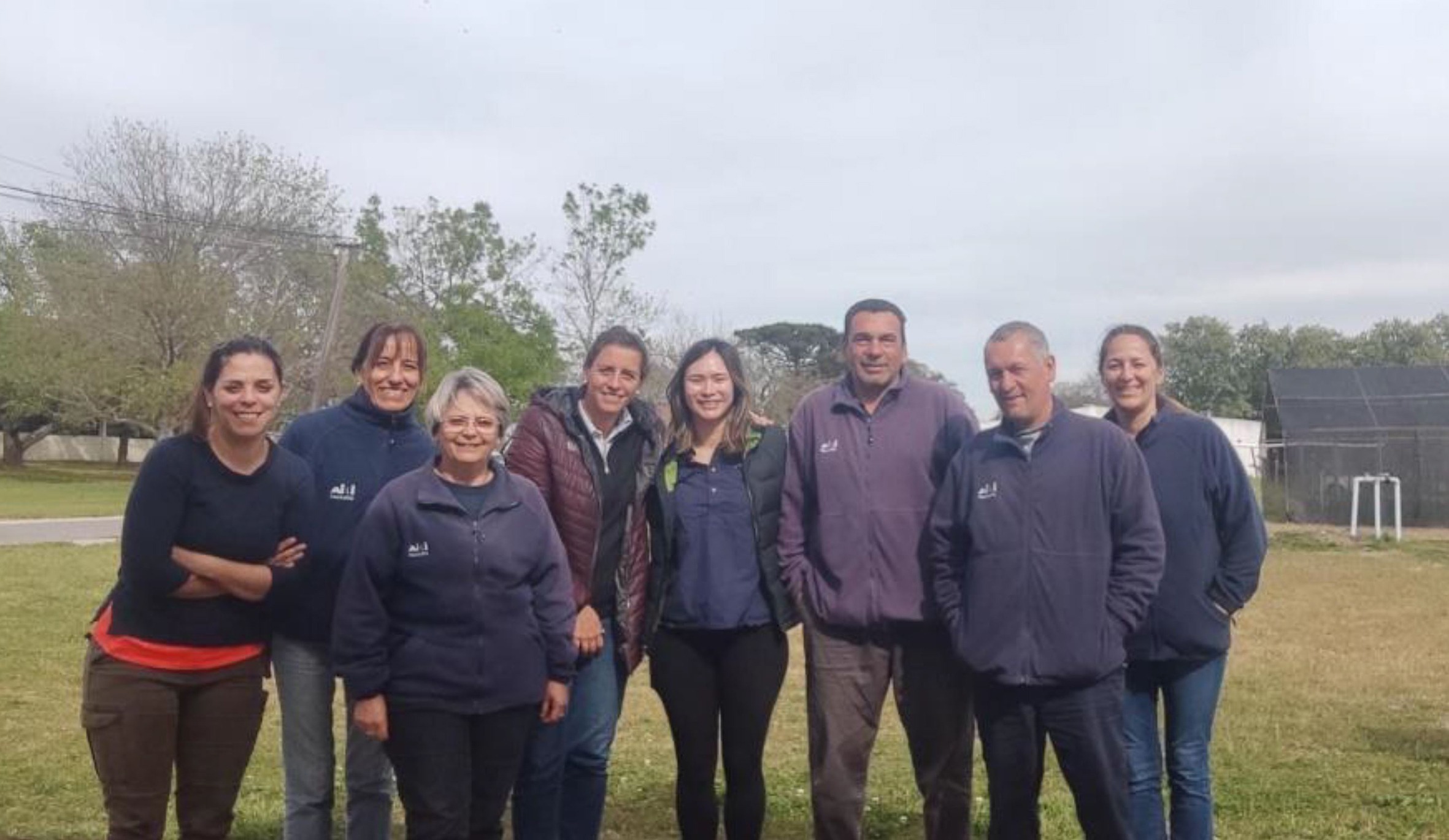

Breeding net form net blotch resistant barley
March 20, 2024

One way the Crawford Fund supports and encourages the next generation of Australians in study, careers and volunteering in international agricultural research is through our highly sought after Student Awards. They are funded by our State and Territory Committees and made possible by organisations including ACIAR, international centres, Australian and overseas universities and NGOs which welcome the students into their projects.
Please note applications for our 2024 Student Awards are currently open!
We would like to share the experience of Sabrina Morrison, from the University of Queensland, who travelled to the National Agricultural Research Institute (INIA) in Uruguay as part of her Student Award research to find resistance traits for net form net blotch (NFNB) in barley.
Net form net blotch (NFNB), caused by the fungal pathogen Pyrenophora teres f. teres, is a disease of barley that causes severe yield losses and reductions in grain quality. P. teres is found in most regions of barley production around the world, including Australia. Breeding durable resistance into cultivars has become a high priority with the emergence of fungicide-resistant P. teres f. teres populations. Exotic isolates of the pathogen remain an ongoing biosecurity threat to the Australian barley industry.
“The Crawford Fund Student Award allowed me to screen the resistance traits of almost 1000 diverse barley lines against local Uruguayan Net form net blotch NFNB disease,” said Sabrina.

“Funding from the Crawford Fund, as well as from the Grains Research and Development Corporation (GRDC), facilitated the planting and maintenance of these barley lines. Barley plants grown in the field were left to become infected by local P. teres f. teres populations in the environment, and my primary role in the project was to screen these barley accessions for NFNB disease,” she said.
“Screenings of other diseases of barley (leaf rust, stripe rust, powdery mildew, and bacterial blight) were also conducted as an added component later in the project, with further disease screenings and a genome- wide association study (GWAS) planned too,” she said.
“The GWAS analysis will be conducted to compare the disease resistance traits of the barley lines against Australian and Uruguayan pathogen populations. From this, we will be able to identify novel haplotypes that facilitate resistance against NFNB, and potentially other diseases, across both countries,” said Sabrina.
Phytopathogens pose an ongoing threat to the Australian barley industry, causing an estimated loss of $252 million in yield every year. Net blotches, caused by the fungal pathogen Pyrenophora teres, contribute to over $125 million of this annual yield loss.

Current management approaches to net blotch diseases include the use of fungicides, resistant barley varieties, crop rotation practices, and stubble management. Fungicide use is the main method for controlling NFNB in Australia, however, fungicide-resistant fungal populations have appeared across the Australian grain belt in recent years.
The development of barley breeding lines that are resilient against NFNB disease is therefore important for sustaining the industry. Breeding for durable resistance against this disease has been challenging due to the pathogen’s ability to overcome common resistances in modern cultivars. Therefore, the identification of novel resistance loci and genes is crucial for the development of more robust breeding germplasm explained Sabrina.
Uruguay, located on the south-eastern coast of South America, has a similar latitude and climate to the Australian southern wheatbelt. Barley is the country’s second-most important winter crop. Similar to Australia, NFNB is a major pathogen that impacts barley production in Uruguay.
“This project provided me with an invaluable array of skills and new knowledge that I can apply to my future research opportunities. I have gained an in-depth understanding of cereal maturity and grain production. I have also gained new knowledge on plant pathogens and their diseases that I can take with me into my PhD, which is also encompasses work on cereal pathology,” said Sabrina.




